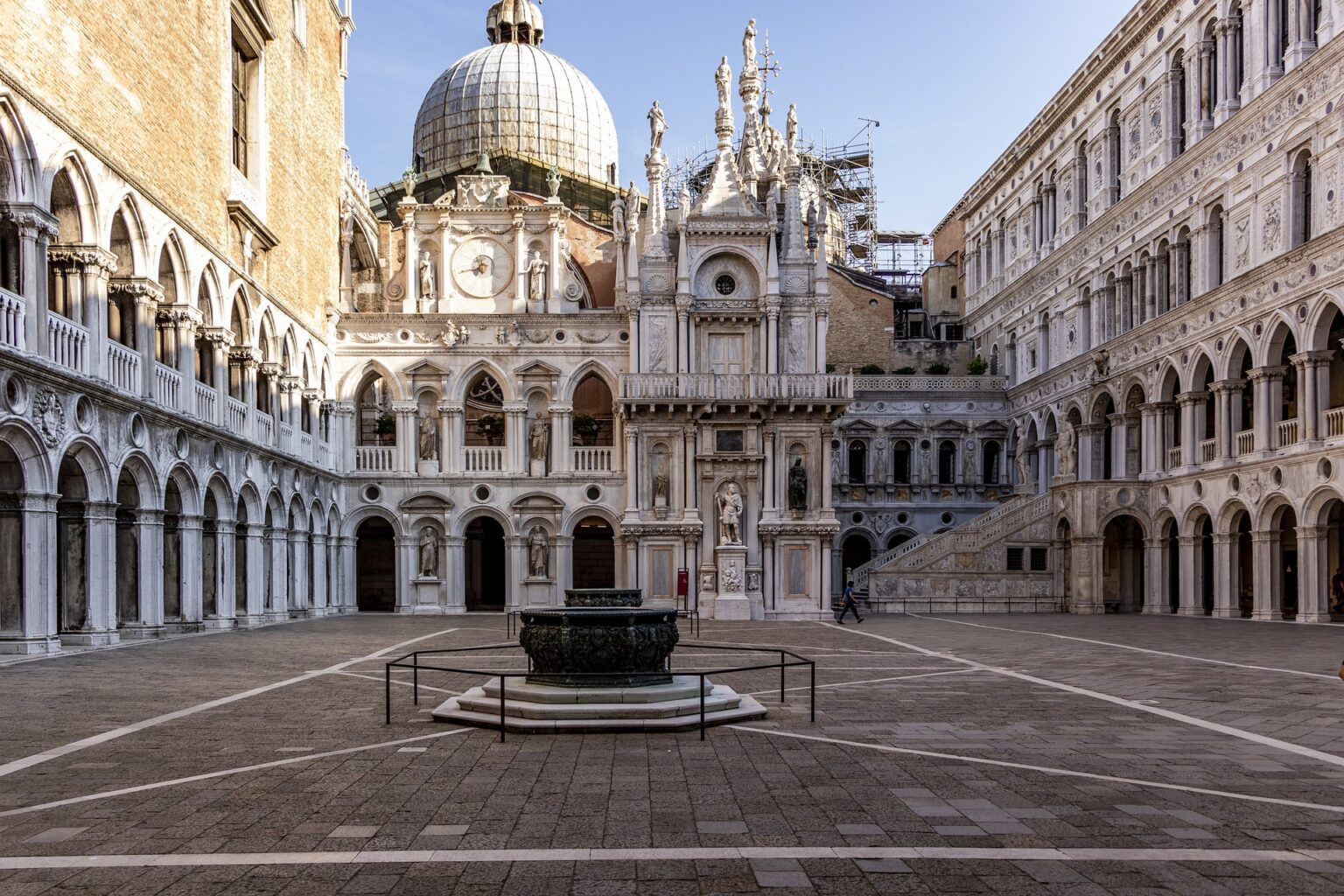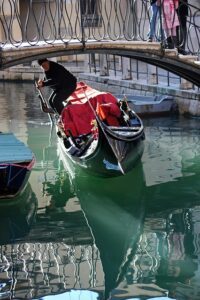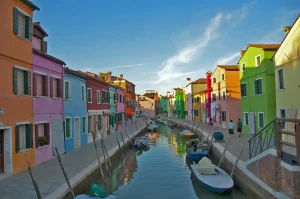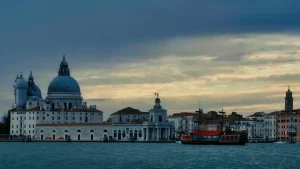Titian in Venice: The Master Who Painted Light
Discover the life, colors, and secrets of Tiziano Vecellio — the Venetian who taught the world how to see.
Walk through Venice on a golden afternoon and you’ll feel it — the light that shimmers across water, dances on facades, and wraps every stone in warmth. That same light once poured through the studio windows of Tiziano Vecellio, better known as Titian, the painter who turned Venice into a palette of living color.
Born around 1488 in the mountain village of Pieve di Cadore and raised in Venice, Titian grew up watching how sunlight and mist could shift a landscape’s mood in minutes. When he later brought that understanding onto canvas, he revolutionized painting itself. He didn’t just capture the world — he made it glow.
His story is also Venice’s story: one of bold invention, impossible beauty, and deep human emotion. Today, you can still trace Titian’s footsteps through the city — from quiet churches and bustling workshops to gilded halls once ruled by Doges. Let’s follow that trail and meet the man who painted like no one before or since.
🎨 From Bellini’s Apprentice to Venice’s Star
Titian arrived in Venice as a teenager and entered the workshop of Giovanni Bellini, the city’s most respected painter. There he learned the secrets of layering translucent glazes, of letting color breathe. But the young Tiziano was restless — too original to stay in another man’s shadow. When he befriended the enigmatic Giorgione, the two began a creative partnership that redefined Venetian art.
Giorgione painted poetry; Titian painted music. His early works shimmered with sensuality and atmosphere. After Giorgione’s untimely death, Titian completed some of his unfinished paintings — seamlessly — and Venice realized there was a new master in town.
The Republic soon made him its official painter. Doges, nobles, and emperors all wanted portraits. Emperor Charles V was so captivated by Titian’s artistry that, according to legend, when the painter dropped his brush, the emperor stooped to pick it up himself — saying that a “Titian is worth serving.”
💡 Painting with Light and Emotion
While Florentines built art from drawing and design (disegno), Venetians believed painting should live and breathe through color — colorito. And no one embodied that belief like Titian.
His reds pulsed with warmth; his blues carried the melancholy of twilight on the lagoon. He mastered chiaroscuro — the contrast of light and shadow — not as a technique, but as a language. Faces emerged from darkness like memories. Draperies flowed like waves. He painted humanity itself: flawed, emotional, divine.
Over six decades, Titian’s style evolved from precision to poetry. In his last years, he painted with his fingers, rags, anything that could give life to the surface. The brush became almost secondary — color was thought, and light was feeling.
🕍 Titian’s Masterpieces in Venice: A Walking Journey
You don’t need a time machine to meet Titian — his spirit lives in Venice’s churches and galleries. Follow this route, and you’ll see the city through his eyes.
1️⃣ Basilica di Santa Maria Gloriosa dei Frari
In the heart of the San Polo district stands the massive brick church of the Frari, home to two of Titian’s most astonishing works.
The Assumption of the Virgin (1516–18): Imagine walking into the Frari in 1518 and seeing this colossal painting glowing above the high altar — the Virgin Mary rising toward heaven in a swirl of angels and light. Venetians gasped, cried, even applauded. It was revolutionary. Never before had faith looked so alive.
The Pesaro Altarpiece (1519–26): To the left of the nave, Titian broke every rule of symmetry — placing the Madonna off-center, introducing diagonal movement and human drama. The painting is a visual sermon on gratitude, commissioned by the Pesaro family after a naval victory.
Tip: Visit in the early morning or late afternoon when sunlight filters through the high windows — the reds and golds glow like stained glass.
2️⃣ Gallerie dell’Accademia
Cross the Grand Canal over the Ponte dell’Accademia and step into the museum that defines Venetian art. Here, Titian’s Presentation of the Virgin (1534–38) unfolds like a grand theatrical scene. The young Mary climbs temple steps bathed in light, while Venetian citizens watch — a union of sacred story and everyday life.
Don’t miss his haunting late works, especially the Pietà, painted near the end of his life. The brushwork dissolves into emotion — faith and fear intertwined.
🎟️ Plan Your Visit to the Accademia Museum
You can also book skip-the-line tickets to save time and explore at your own pace.
3️⃣ Church of San Salvador
A short stroll from the Rialto Bridge brings you to this quiet church — easy to overlook, impossible to forget. Inside hangs Titian’s ethereal Annunciation, painted in his later years. Look closely: the angel bursts in with light that seems to pierce the canvas. It’s as if Titian no longer painted with pigment, but with faith itself.
4️⃣ The Doge’s Palace
Though most of Titian’s grand state works have been lost to fire or time, the Doge’s Palace remains the stage for which he painted so many leaders. His portraits once lined these gilded halls — proud, solemn, shimmering with authority.
To walk here is to understand his clientele: men who ruled by ceremony and spectacle. You can see how Titian’s art elevated power itself into myth.
Learn more in our full guide: The Full Story of the Doge’s Palace or get your fast-track tickets to skip the lines.
🖌️ Portraits That Breathe
Titian didn’t paint people — he revealed them. His Doges and courtiers don’t pose; they inhale. A single hand gesture, a turned shoulder, a gleam of velvet tells you everything about status and soul. In his Portrait of Pope Paul III, the old pontiff seems alive, alert, calculating. In La Bella, sensuality glows beneath propriety.
For the first time, power had psychology — and portraiture would never be the same again.
🔥 The Final Years: Painting with Fire
Even as plague ravaged Venice in the 1570s, Titian kept painting. His hands trembled, his eyesight dimmed, but his art grew more spiritual, stripped of vanity. In his last self-portrait, the once-celebrated artist stares out from darkness — weary yet undefeated. When he died in 1576, likely of the plague, he was still working on the Pietà, meant for his own tomb in the Frari. The brushstrokes are loose, almost abstract — like prayers whispered through paint.
In that unfinished canvas, you can see the entire story of Venice: brilliant, fragile, eternal.
🌅 Tips for Seeing Titian Like a Venetian
- Go early or go late: Morning and sunset light reveal details most tourists miss. Titian’s colors change with the lagoon’s mood.
- Visit the Frari first: Start with the Assumption — it sets the tone for everything else.
- Cross the Grand Canal by vaporetto: Use a Venice Waterbus Pass to move easily between districts.
- Take a private guide: Our local experts bring the stories to life — you’ll see details most people overlook.
- Pair art with aperitivo: After the Accademia, stop by a traditional bacaro for cicchetti and wine — the perfect Venetian tradition.
🚶♀️ Explore Venice Off the Beaten Path 🏛️ Book a Private Doge’s Palace Tour
🗺️ Plan Your Titian Trail
- 📍 Titian in Venice — The Renaissance Trail
- 🎨 Accademia Museum: What to See
- 🏛️ The Full Story of the Doge’s Palace
- 🖼️ 10 Best Museums in Venice
✨ Experience Venice the Way Titian Saw It
Venice isn’t just a city of paintings — it’s a painting itself. From the Frari to the Grand Canal, from quiet dawns to glowing sunsets, every corner still holds Titian’s touch. Join one of our private Venice tours to see the masterpieces, hear the legends, and feel the light that inspired a genius.
🎟️ Book Your Venice Art Tour Now
FAQs About Titian in Venice
Where can I see Titian’s paintings in Venice?
You can find Titian’s masterpieces across Venice. His most famous works — The Assumption of the Virgin and The Pesaro Altarpiece — are inside the Basilica dei Frari in San Polo. The Gallerie dell’Accademia houses The Presentation of the Virgin and several late works, including the moving Pietà. Don’t miss the Church of San Salvador, home to his radiant Annunciation. To explore them all efficiently, consider our Off-the-Beaten-Path Orientation Tour or a Private Grand Canal Boat Tour linking these landmarks by water.
What makes Titian’s art so special?
Titian transformed painting by mastering colorito — the Venetian art of expressing emotion through color and light. His reds and golds seem to glow from within, and his later brushwork feels almost modern in its freedom. You can experience that radiance best inside Venice’s softly lit churches and galleries, where his canvases still reflect the lagoon’s light. For a guided look at his influence, join our Doge’s Palace & St. Mark’s Basilica Private Tour.
How can I plan a Titian-themed itinerary in Venice?
Start at the Frari Church, cross to the Accademia, visit San Salvador, and end at the Doge’s Palace to grasp his full legacy. Get a Vaporetto Pass for easy transport between sestieri, or book a Private Venice Art Tour to trace his works with an expert local guide. Along the way, reward yourself Venetian-style with a sunset Spritz and cicchetti — because even Titian understood that art and life are meant to glow together.







